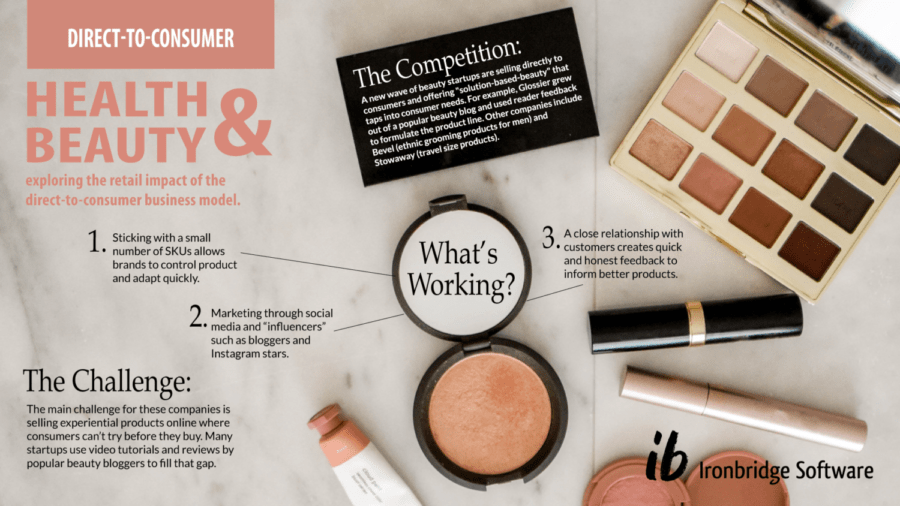Manufacturers are selling direct-to-consumer more than ever before. According to a blog post by the logistics platform Bringg, nearly half of manufacturers are pursuing direct-to-consumer sales and 87% of them report these channels are relevant to their consumers and their products. To understand why such a shift is occurring now, we first have to understand the supply chain that has driven consumer retail for decades.
[ click to zoom ]
What is direct-to-consumer
Before e-commerce disrupted retail, manufacturers sold goods to a wholesaler that sold to a retailer that sold to the consumer. Products would go from warehouse to truck, truck to pallet, pallet to shelf before landing in a consumer’s hands. Some businesses always embraced direct-to-consumer (think bottled water delivered to your house), but by and large, consumers visited a store to purchase anything from groceries to home improvement products to clothing.
The rise of e-commerce and especially Amazon changed all this. As the diversity in products sold online grows and delivery times decrease, consumer expectations grow. Now, manufacturers can sell goods directly to the consumer via their own website or even through Amazon. Manufacturers are rushing to join the direct-to-consumer revolution.
Benefits of direct-to-consumer sales
The appeal of selling direct-to-consumer lies in a relationship with consumers. For the first time, manufacturers can have complete control over their brand identity. In the past, intermediaries had control over where products were placed and how consumers experience the product. Now, manufacturers can control these elements like never before.
Social media and digital marketing have upended the traditional marketing strategies of manufacturers. Now, the brands can market themselves, develop a strong story and identity and do so at a much lower cost than print or in-store marketing had previously offered.
It’s not only natural, but expected for manufacturers to have an e-commerce presence. When was the last time you visited a brand’s website and weren’t able to purchase a product? It’s becoming increasingly rare and manufacturers are anxious to join the masses in selling their products from their own websites.
Finally, manufacturers selling direct to the consumer retain far more of the margin they give up to the wholesaler/retailer.
Obstacles to selling direct-to-consumer
While selling direct-to-consumer has immense appeal, it also poses some challenges. First, a manufacturer needs the infrastructure to sell directly from their warehouses. Remember, most brands are set up to sell large quantities to wholesalers and retail distribution centers. Putting in place the logistics to take individual orders and ship single items to consumers can be costly and inefficient. According to an article written by Frank McGuigan for talkinglogistics.com, “supporting a multi-channel delivery model requires an agile supply chain and exceptional supply chain planning and execution processes and technology to make it work.”
Another major challenge for manufacturers is to sell online and via Amazon while retaining profitable relationships with intermediaries like wholesalers and retailers. Essentially, they need to straddle the traditional retail model with the new wave brought on by e-commerce. This is called channel conflict. There are ways to manage channel conflict and we’ll address a few strategies later on in this blog series.
How can big data analytics help?
If you’re a manufacturer, looking at your own data is the single best way to measure the value of direct-to-consumer sales. If you want to know if your direct-to-consumer channels are working, you have to look at your own data. Ironbridge’s team of expert consultants can help you drill down on sales, inventory and pricing so that you can manage relationships with both retailers and consumers. Contact us for a free quote today.
Written by Kim Kelly Consulting.







